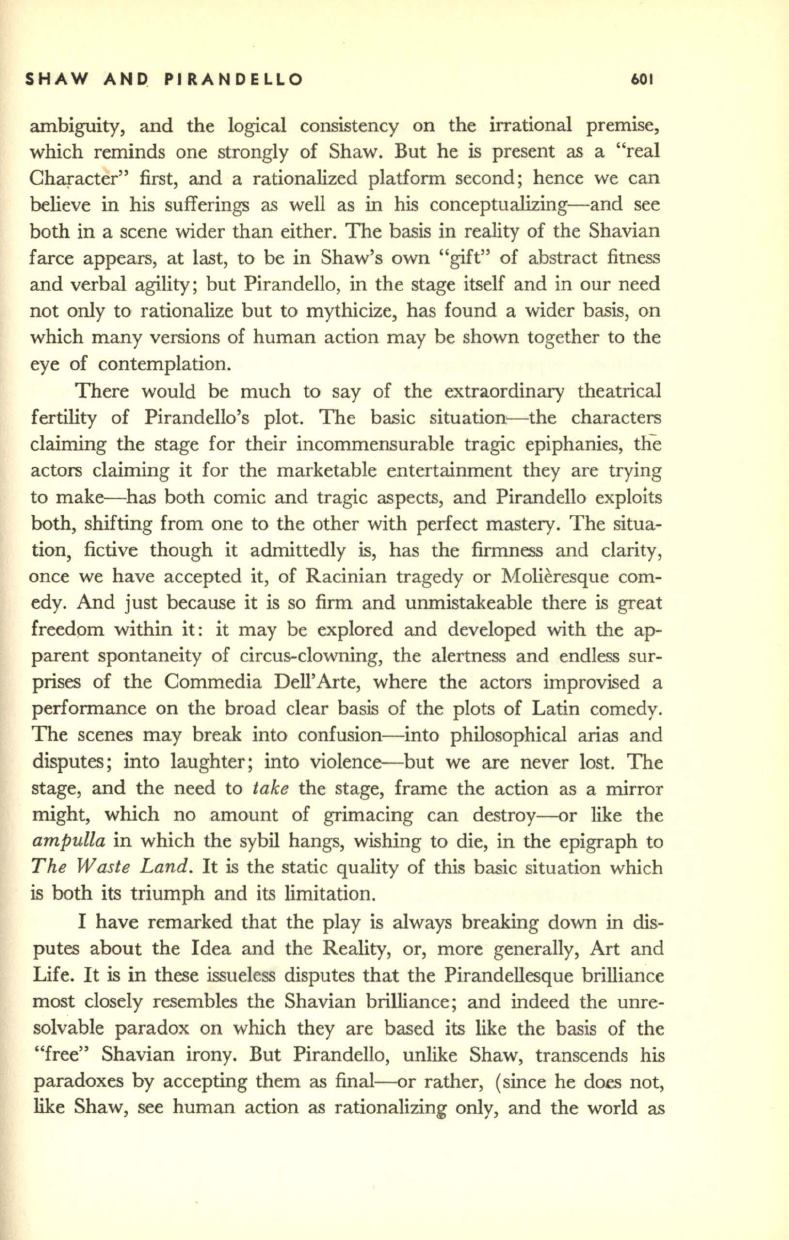
SHAW AND PIRAND EL LO
601
ambiguity, and the logical consistency on the irrational premise,
which reminds one strongly of Shaw. But he is present as a "real
Character" first, and a rationalized platform second; hence we can
believe in his sufferings as well as in his conceptualizing-and see
both in a scene wider than either. The basis in reality of the Shavian
farce appears, at last, to be in Shaw's own "gift" of abstract fitness
and verbal agility; but Pirandello, in the stage itself and in our need
not only to rationalize but to mythicize, has found a wider basis, on
which many versions of human action may be shown together to the
eye of contemplation.
There would be much to say of the extraordinary theatrical
fertility of Pirandello's plot. The basic situation-the characters
claiming the stage for their incommensurable tragic epiphanies, the
actors claiming it for the marketable entertainment they are trying
to make-has both comic and tragic aspects, and Pirandello exploits
both, shifting from one to the other with perfect mastery. The situa–
tion, fictive though it admittedly is, has the firmness and clarity,
once we have accepted it, of Racinian tragedy or Molieresque com–
edy. And just because it is so firm and unmistakeable there is great
freedpm within it: it may be explored and developed with the ap–
parent spontaneity of circus-clowning, the alertness and endless sur–
prises of the Commedia Dell'Arte, where the actors improvised a
performance on the broad clear basis of the plots of Latin comedy.
The scenes may break into confusion-into philosophical arias and
disputes; into laughter; into violence-but we are never lost. The
stage, and the need to
take
the stage, frame the action as a mirror
might, which no amount of grimacing can destroy--or like the
ampulla
in which the sybil hangs, wishing to die, in the epigraph to
The Waste Land.
It is the static quality of this basic situation which
is both its triumph and its limitation.
I have remarked that the play is always breaking down in dis–
putes about the Idea and the Reality, or, more generally, Art and
Life. It is
in
these issueless disputes that the Pirandellesque brilliance
most closely resembles the Shavian brilliance; and indeed the unre–
solvable paradox on which they are based its like the basis of the
"free" Shavian irony. But Pirandello, unlike Shaw, transcends his
paradoxes by accepting them as final--or rather, (since he does not,
like Shaw, see human action as
rationalizin~
only, and the world as


